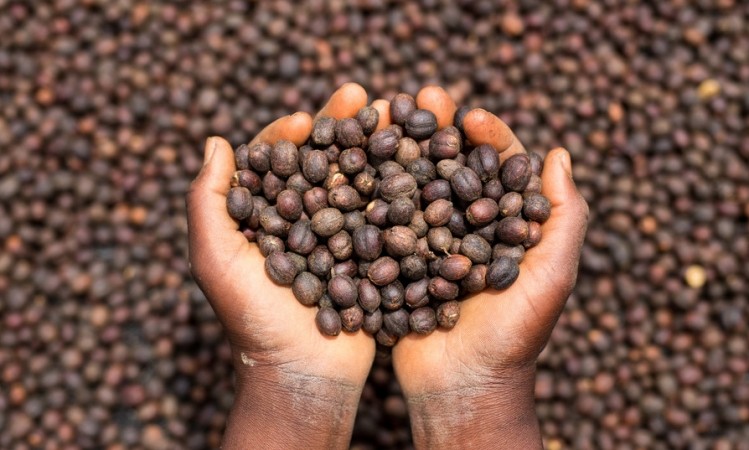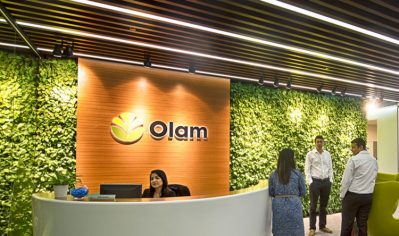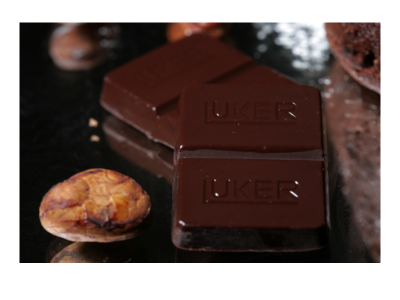Q&A - Single Origin Special Edition
The lowdown on single origin chocolate

Q: What is Single Origin chocolate?
A: Single-origin chocolate is chocolate made from one variety of cocoa bean, grown in a particular region. Just like the grapes used to make wine, cocoa beans from specific regions have their own terroir. The taste of the cocoa beans is affected by the soil and landscape in which they are grown, which gives them their own unique flavours. These beans are then blended with other ingredients during the manufacturing process to create the perfect colour or flavour combination for a customer.
The challenge comes in seeking out new cocoa territories, and fresh terroirs in established growing regions, in the pursuit of cocoa beans with flavours customers may not have experienced before.
Q: Why are single-origin cocoa ingredients on the rise?
A: Single-origin cocoa ingredients are not a new concept but have recently enjoyed a massive boost in popularity. The trend has been strongest in cocoa liquors – no surprise given these are the critical component in the manufacturing of chocolate, but it is now expanding to other ingredients, like cocoa powders. There are many reasons behind the rise in popularity – the most noticeable being that single-origin ingredients play into the desire for more premium products. While single-origin cocoa does not automatically equate to better cocoa, quality has as much to do with production and processing methods as it does with terroir – it often equates to higher quality in the minds of consumers. Many see single-origin cocoa ingredients as more luxurious and therefore more desirable.
Q: What are the benefits and challenges for Olam?
A: The main benefit is that this trend allows us to experiment with new flavours. More customers are starting to see single-origin ingredients as desirable because they concentrate on rich flavours and create distinctive new tastes. When mixing cocoa beans from different origins, the terroir is obviously lost; with a single origin, you reveal the unique character of the cocoa. We are responding to this demand at our state-of-the-art processing facility in Koog, in the Netherlands, where we create our own distinctive, single-origin cocoa liquors. From a beautifully aromatic Ecuadorian single-origin cocoa liquor to a bold, smooth tasting liquor exclusively from Ghana to a complex and rich whole bean roasted liquor from Côte d’Ivoire. Each is unique in its own way.
The challenge comes in seeking out new cocoa territories, and fresh terroirs in established growing regions, in the pursuit of cocoa beans with flavours customers may not have experienced before. We can expect to see more sourcing from remote areas or regions with smaller-scale production, like Uganda and Madagascar, for their particular taste profiles.
This is also why we recently launched Twenty Degrees, our specialty cacao business sourcing premium quality cacao beans from around the world. The business will unlock opportunities for farmers by bringing single-origin cacao beans to market that are either too specialist or too remote to be sold to mainstream manufacturers. This also allows it to provide customers with new levels of transparency and traceability right back to the farm gate, so chocolate makers can know everything about the cacao beans they buy, from the farmers who grew them to the carbon footprint of the crop.
Q: How to earn consumers’ trust with origin?
A: Now more than ever before, consumers expect greater traceability in the supply chain as they are more interested in where their food comes from and how it is sourced. While traceability is possible with blended ingredients, sourcing ingredients from a single origin allows companies to further improve the traceability, right down to farming cooperative or sometimes even farmer level. Because of this, consumers are able to trust when purchasing a single-origin cocoa ingredient that they are buying a product that was ethically produced and is not harmful to the environment or society. This is ultimately what brings customers back.
For example, because our deZaan D11MG cocoa powder is crafted from 100% Ghana cocoa beans, it can be offered as a fully traceable ingredient. Shaped by the industry-leading goals in our sustainability ambition, Cocoa Compass, and reported on through our sustainable sourcing platform, AtSource, we can leverage environmental and social data to create unprecedented levels of transparency for our customers at each stage of the supply chain journey and give consumers confidence in the snacks and confectionery they enjoy.
Q: What’s next for single origin cocoa? Will consumers demand more, will cocoa become more expensive for example as a payoff for a more sustainable and social responsibly sourced product?
A: Single-origin cocoa products will continue to rise in popularity as a premium product. In Western Europe and North America, we’ve seen affluent and health-conscious consumers choosing fewer cocoa products but buying better quality when they do – but this isn’t only the case in the West. We also see a big spike in demand for higher quality cocoa ingredients across Asian markets. In fact, the primary market for our D11MG Ghana single origin cocoa powder from our premium cocoa brand deZaan, is Japan. This is because Japanese customers highly value the quality associated with purely Ghanaian cocoa beans and the smooth cocoa flavour it lends to dairy, bakery, and dessert applications like chocolate milk and chocolate ice cream. Knowing this, we can confidently say that interest in single-origin cocoa products will continue to spread across the globe in the next few years.
Q: Explain more about Olam’s about the sustainability approach, where it sources its cocoa from, for example?
Much of the world’s cocoa is sourced from smallholder farmers in West Africa, South America and South-East Asia, with the majority owning a relatively small amount of land, and yields are often not large enough to generate a living income that will fully support their families. Low incomes can, in turn, lead to child labour because children stay at home to work the land and support their families rather than attend school, and to deforestation, as farmers resort to clearing more land for crops.
Our sustainability ambition, Cocoa Compass, sets out ambitious goals for 2030, including achieving a living income for 150,000 farmers, eliminating child labour in our direct supply chain and ensuring access to education, restoring forests through an increase in tree carbon stock, and a 30% reduction in natural capital costs. We believe that by helping farmers improve their yields and incomes, we will go a long way towards solving child labour, education, and deforestation.
Through the hard work of our teams and the support of our customers and partners, we have now achieved 100% traceability and 100% deforestation monitoring in our direct supply chain and child labour monitoring in all our managed sustainability programmes. This is just the beginning for us. The unprecedented level of data and insight we now have at our fingertips will help us identify how and where to act to achieve our longer-term ambition of a professionalised and quality-focused cocoa supply chain, one where farmers are earning a living income, child labour is eliminated, and the natural world is protected.
- Check out Olam’s deZaan D11MG cocoa powder for more information on the company’s single origin offer.














